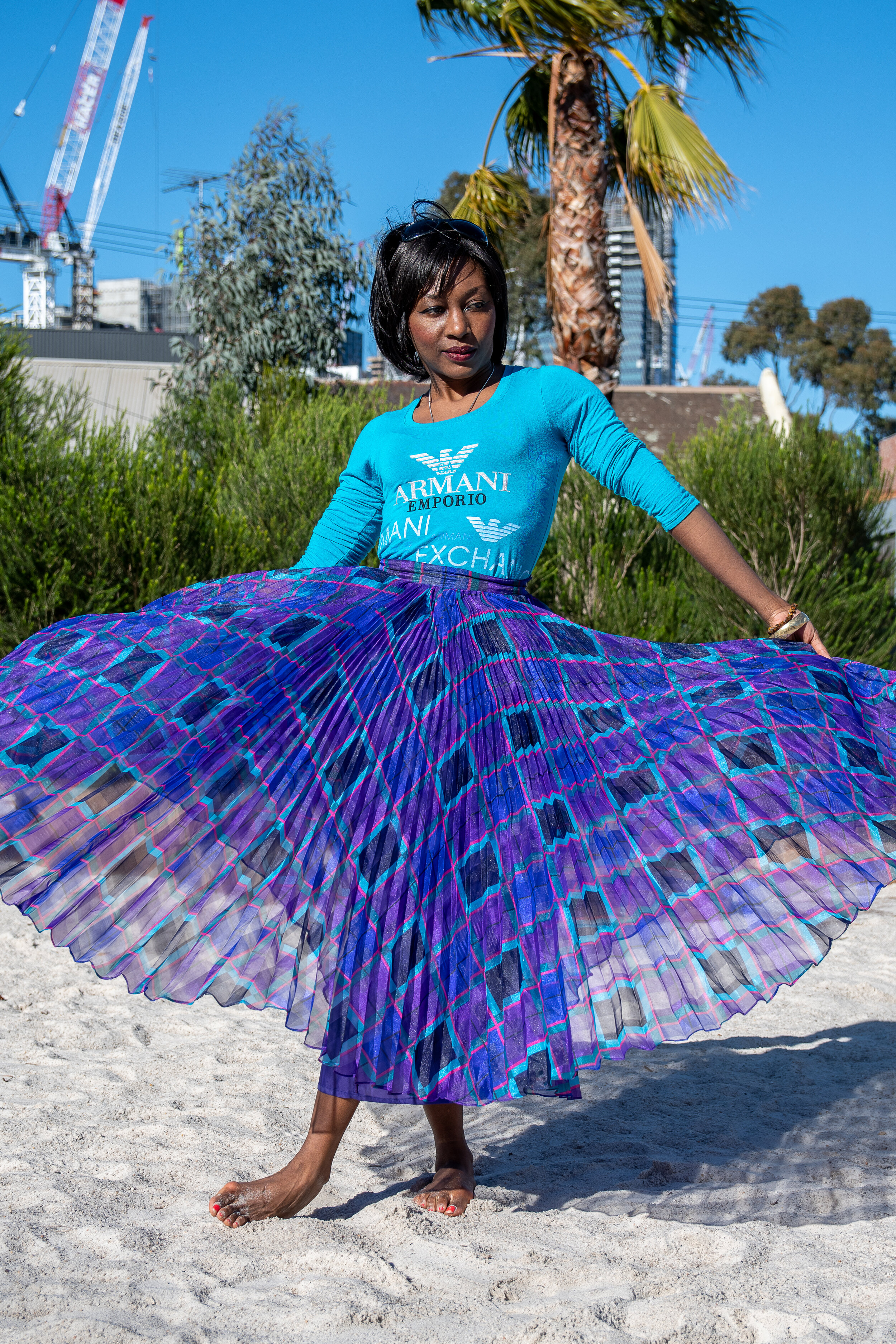Like most of my outfits, this ensemble is preloved. The top is from an op shop and the skirt is from a luxury/designer second-hand store. I’ve been op shopping and eco styling since the age of fifteen. Even though I’ve forged a purpose-driven career of fashion sustainability and climate activism from it, I realise that many still hold the view that preloved apparel is something taboo, shameful or only for those with low incomes.
With the plight of fast fashion where 80 to 150 billion new garments are manufactured every year, we’re consuming approximately 400% more than we did over 20 years ago. We’re buying more, wearing less and sending nearly three-fifths of likely reusable (and sometimes still new) garments to landfill or incineration each year. The fashion and textile over-consumption and waste problem are a major dilemma in climate change. This is why choosing preloved clothing can no longer be seen as just a money-saving endeavour. It is a planet-saving one.
For years I’ve shared images of preloved outfits from op shops, thrift stores, clothes swaps, vintage stores and markets. The intention is not only to share what I enjoy, but mainly to shift the negative stereotypes around second-hand clothing. If I’m able to fascinate with a glorious masterpiece sourced from op shopping, then I always hope it will inspire the start of people’s slow fashion journeys. Op shops and preloved sources have the unique ability to bless you with the magical experience of finding that rare piece that lights up your world when you wear it.
However, I never mention the price of the pieces I wear because I believe it might not be best to focus solely on the affordability factor. Preloved clothing is for everyone, of every income level and background. Therefore, price should not be the only reason to op shop. It’s a given that preloved clothing is cheaper. And it’s perfectly okay that some can only afford to shop at thrift stores. However, for those who still think it’s only good for when you’re on a shoestring budget, here are some reasons to go preloved:
Buying one used item reduces its carbon footprint by 82%.
Op shops are charities that use their funds to help disadvantaged, marginalised and vulnerable groups like children, the homeless and victims of domestic violence.
The eclectic range of preloved clothing in stores and online lets you sample and mix clothing of multiple styles, genres and eras. It lets you see yourself in a different light, as a suggestion that anything is possible for you. With that, it becomes empowering and makes your style unique and iconic.
STYLING
This retro pattern skirt is the centre piece in this look. In being simplistic, I chose a blue top that has chemistry with the blue lines in the skirt. This light blue shade of the top complements or works well with any of the other colours of the skirt: purple, pink, black or royal blue.
Styling tip:
I wore this elegant piece to play in the sand but by all means, try wearing a pair of dress shoes, button down shirt or silk blouse with a skirt like this. It converts it to a look to wear to the office, an art exhibition or other occasion. If you’re bold enough, dare to pattern clash this skirt by wearing it with a floral, polka dot or patterned top with corresponding colours.
Outfit sourced from:
Blue Armani Top - The Green Shed Op Shop
Perri Cutten Retro Skirt – Second Mode Luxury & Designer Preloved Store
♥ Nina Gbor
Instagram: @eco.styles
Photography by Pepper Street Photography
References:
https://www.thredup.com/resale?tswc_redir=true
https://www.vox.com/the-goods/2020/1/27/21080107/fashion-environment-facts-statistics-impact










